Mercury Surface Science - Space Science Faculty
Mercury Surface Spectroscopy (MeSS)

The Mercury Surface Spectroscopy research group, the MeSS, is searching the surface of Mercury using remote sensing instruments and laboratory experimentations.
The closest planet to the Sun is full of mysteries, and the latest observations from the MESSENGER mission have revealed quite a number of surprises. The planet is "rich" in volatiles, volcanism is an important contribution to Mercury's history, ice depostis are present in the northern hemisphere, and hollows might be the morphological expression of recent degassing of Mercury's sub-surface.
Through various on-going, and growing collaborations, we are open to explore all scientific interests related to the surface of the planet. All of our activities have important implications in the preparation of the BepiColombo observations, and we particularly ensure that our research benefit the planing of targeted observations on the surface.
Science Objectives
As for now, we are very much focused on spectroscopy. We are using observations done by the MASCS instrument onboard the MESSENGER mission. From 300 to 1400nm, reflectance spectra from the surface are very useful to explore physical and chemical properties of the planet. The camera MDIS is also used, and is of good help to provide context to the point spectrometer.
So to speak, an instrument is not a science obejctive. This is entirely true, and we make use of the MASCS observations to understand various aspects of Mercury's surface
- Volcanism. This is the historical research being done by the group. What are the properties of volcanic landscape on Mercury, and how does it help us to understand Mercury's history. We focus a lot on explosive volcanism, a volcanism very much linked to volatile.
- Hollows. This is the latest analysis being done with the MASCS data. The spectral resolution of the MASCS instrument help us to go further in the analysis of the hollows, and constain the possible mineralogical assemblage of those landscape
- Reflectance Spectroscopy. With the novel approach that we are developping, we are looking at the overall characteristics of reflectance spectroscopy at a planet scale. What are the end-members, how is that related to the global morphology of the planet?
- Crustal magnetism. We have been recently looking into the impact of crustal magnetism on the spectral properties of the surface. Combining data from the magnetometer, can spectroscopy help to better understand the effect of crustal magnetism on the planet?
- Space Weathering. We are looking at the effect that SpWe has on spectra that we observe on Mercury. At the same time, we try to remove the contribution of SpWe when we do not want it, and also identfy properties to understand Mercury's environment.
and much more that we are starting, or we have ideas about. Maybe you have suggestions, we will be happy to discuss them!
Novel approach
What is the core of our approach in the analysis of the data is to combine the scientific expertise with the technical expertise and infrastructure of ESAC. The MASCS data are imported in a relational database that allow scientists to rapidly search for relevant reflectance spectra. Shall your criteria be the location on the surface, the viewing geometry, the spectral parameters, the spatial resolution, the MeSS database will ease your search and provide to you the spectra you need.
We are currently mining through more than 4.7 million spectra of MASCS. With such a high number of spectra, statistic is not longer an issue.
We have also recently explored the benefits of Deep Learning in analysing refectance spectroscopy of Mercury, and it works!
Members
The core team is located at ESAC and is composed of Sebastien Besse and Claudio Munoz. Other collaborators at ESAC include Thomas Cornet, Jack Wright and Joana S. Oliveira.
Colleagues at ESTEC are also helping us with the scientific analyses, in particular Johannes Benkhoff, Joe Zender.
The project is activelly supported and done in cooperation with the Paris Science Lettres (PSL) university with Alain Doressoundiram, Emma Caminiti, Mireia Leon-Dasi and Michele Lissoni.
Our collegues from the DLR-Berlin are also very much involved in this initiative, in particular Oceane Barraud, Jorn Helbert, Alessandro Maturilli, and Mario D'amore.
We have an on-going collaboration with the Open University in the UK, Professor David Rothery.
We have an on-going collaboration with the University of Helsinki, Professor Karri Muinonen and Antti Penttilla.
We have an on-going collaboration with the John Hopkins Applied Physics Laboratoy, Lauren Jozwiak and Noam Izenberg.
We have an on-going collaboration with the National Air and Space Museum, Erica Jawin.
We have an on-going collaboration with the Munster University, Jan Hendrick Pasckert.
Scientific Publications
[2024] Caminiti, E., Lanz, C., Besse, S. et al. Effects of ion irradiation on Mercury terrestrial analogues in the visible to mid-infrared. Icarus 420, 116191. 10.1016/j.icarus.2024.116191
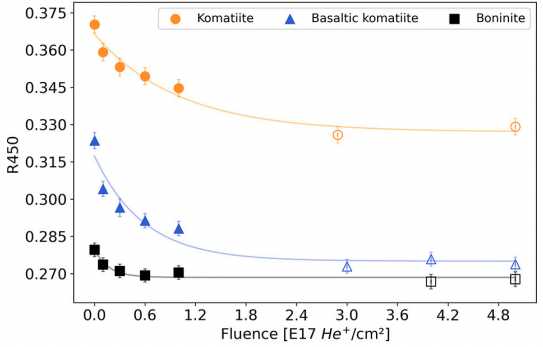
--> evaluating the effect of ion irradation on Mercury's analogues
[2023] Caminiti, E., Doressoundiram, A., Besse, S. & Wright, J. A Spectral Study of the Caloris Basin on Mercury and the Origin of Associated Volcanic Smooth Plains. J. Geophys. Res.: Planets 128. 10.1029/2022je007685
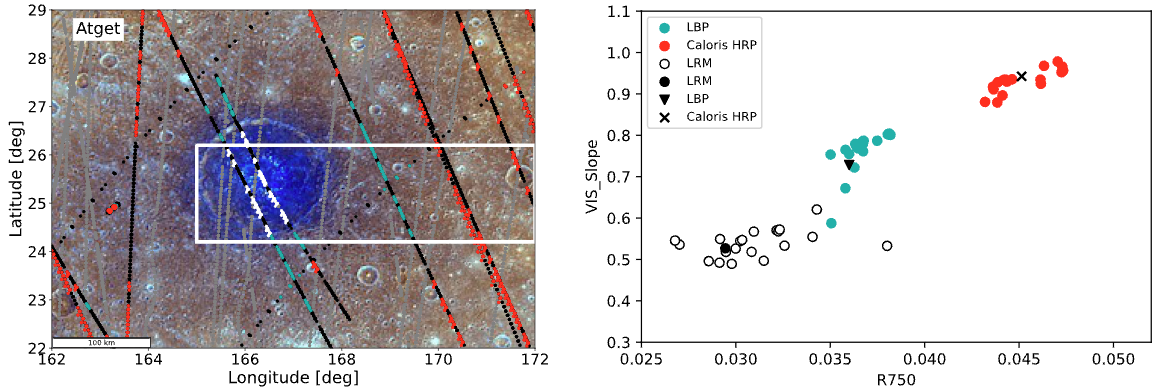
--> probing the crustal composition of the Atget crater using visible spectroscopy
[2023] Leon-Dasi, M., Besse, S. & Doressoundiram, A. Deep Learning Investigation of Mercury’s Explosive Volcanism. Remote Sens. 15, 4560. 10.3390/rs15184560

--> measuring the true extend of pyroclastic deposists using Deep Learning
[2023] Barraud, O., Besse, S. & Doressoundiram, A. Low sulfide concentration in Mercury’s smooth plains inhibits hollows. Sci. Adv. 9, eadd6452. 10.1126/sciadv.add6452
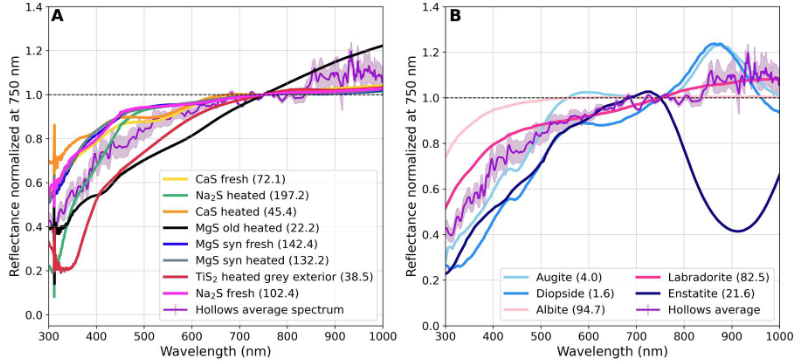
--> exploring hollows spectral composition using laboratory analogs
[2021] Barraud, O., Besse, S., Doressoundiram, A., Cornet, T. & Muñoz, C. Spectral investigation of Mercury’s pits’ surroundings: Constraints on the planet’s explosive activity. Icarus 370, 10.1016/j.icarus.2021.114652
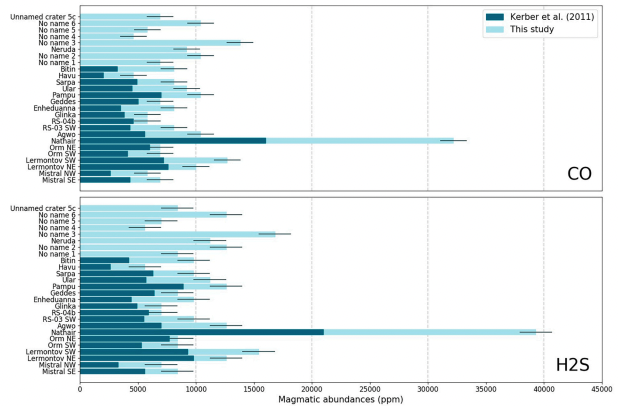
--> constraining the volatile content of Mercury using spectroscopy
[2021] Rothery, D. A. et al. On the asymmetry of Nathair Facula, Mercury. Icarus 355, 114180. 10.1016/j.icarus.2020.114180

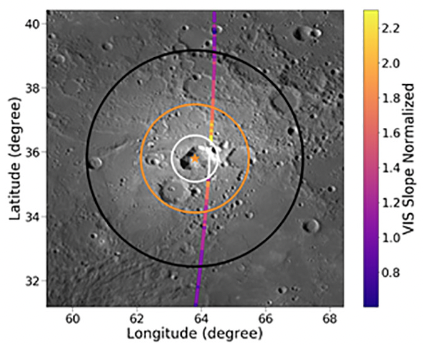
--> Measuring the assymetry of the Nathair Faculae using UV/VIS/NIR spectroscopy
[2020] Besse, S. et al. Spectral Properties and Physical Extent of Pyroclastic Deposits on Mercury: Variability Within Selected Deposits and Implications for Explosive Volcanism. J. Geophys. Res.: Planets 125. 10.1029/2018je005879

--> isolating the pyroclastic deposits properties using UV/VIS/NIR spectroscopy
[2020] Barraud, O., Doressoundiram, A., Besse, S. & Sunshine, J. M. Near‐Ultraviolet to Near‐Infrared Spectral Properties of Hollows on Mercury: Implications for Origin and Formation Process. J. Geophys. Res.: Planets 125. 10.1029/2020je006497
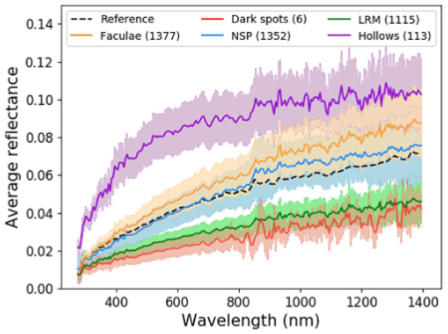
--> identyfing the peculiar hollows spectral properties using UV/VIS/NIR spectroscopy
[2015] Besse, S., Doressoundiram, A. & Benkhoff, J. Spectroscopic properties of explosive volcanism within the Caloris basin with MESSENGER observations. J. Geophys. Res.: Planets 120, 2102–2117. 10.1002/2015je004819
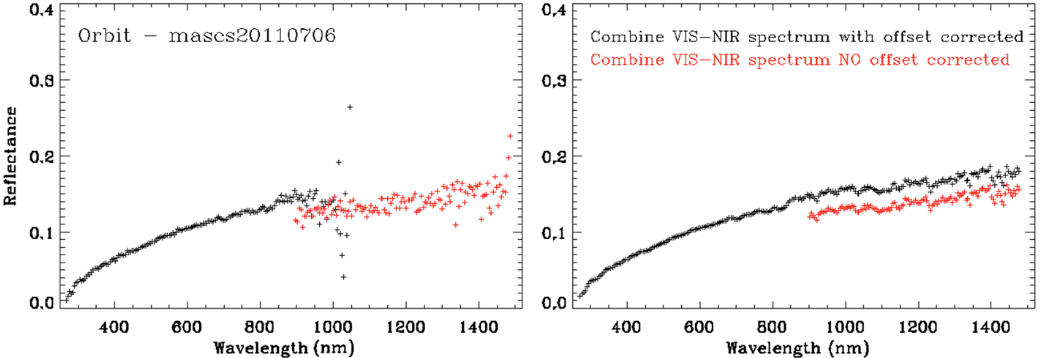
--> improving the MASCS spectral calibration to exploit the UV/VIS/NIR domain
- Removed a total of (1) style float:left;








































 Sign in
Sign in
 Science & Technology
Science & Technology